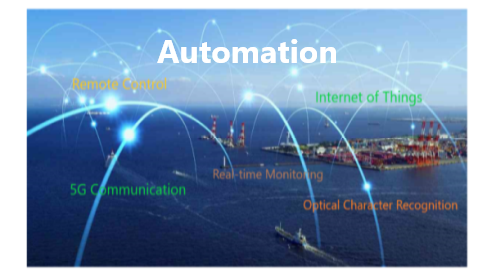Australian ports such as Brisbane and Sydney were early leaders in the adoption of automated container handling, and Melbourne’s fully automated Victoria International Container Terminal (VICT) has been at the cutting edge of automation.
Last week Evergreen Shipping opened Taiwan’s first fully-automated container terminal equipped with remote-controlled gantry cranes. It incorporates 5G communication systems, optical fibre connectivity, and Internet of Things (IoT) information networks covering the entire site, together with the carrier’s intelligent terminal operating system (EMCTOS), optical character recognition (OCR) technology and real-time power consumption monitoring system.
VICT was the first fully automated facility of its kind in Australia when it opened in 2017. In addition to its Ship-to-Shore (STS) cranes, it features 20 automatic stacking cranes (ASC), which handle the interchanges between trucks and the container stacking blocks, both on the land-side and quay-side. There are also 11 automatic container carriers (ACC) on site to enable driverless container delivery.
All container terminals aim for more efficient operation and higher productivity and more of them are adopting automated solutions to meet the challenge of larger containerships, which place new demands on turnaround times.
Just last week Orient Overseas Container Line Ltd. (OOCL) introduced one more 24,188 TEU mega vessel, named “OOCL Felixstowe,” in Dalian, China. It is the fourth eco-friendly vessel of this size to be received by OOCL in a series of twelve. Handling 20,000+ TEU calls in 48 hours requires about 500 TEU/hour capacity, and carriers are not about to accept lower service levels or longer times at shipping berths.
Ship-to-Shore (STS) cranes set the pace for the whole terminal. Their automation, along with remote control, are currently major trends that are profoundly reshaping procedures at ports and terminals.
Remote operation is an integral part of automation that enables people to be separated from machines and moved away from a dangerous and harsh working environment – caused by the increasing height and capacity of cranes – into the safety and comfort of a control room.
Australia’s ports handle 98% of the nation’s international trade and the sharp increase in demand that is anticipated over the next fifteen years means we need more capacity at our terminals. Maritime transport underpins our import/export trade and, like all industries, it will necessarily continue to experience rapid advances in technological innovations.
Read our related article: Expansion of Smart Container Fleets
As licensed Customs Brokers and International Freight Forwarders, Colless Young professionally handles all your sea cargo consignments, containerised and general. We provide import and export shipping, as well as airfreight, including customs and quarantine clearance, fumigation treatment, warehousing and trucking. We are based in Brisbane and offer a complete range of logistics services through all Australian ports and airports.

